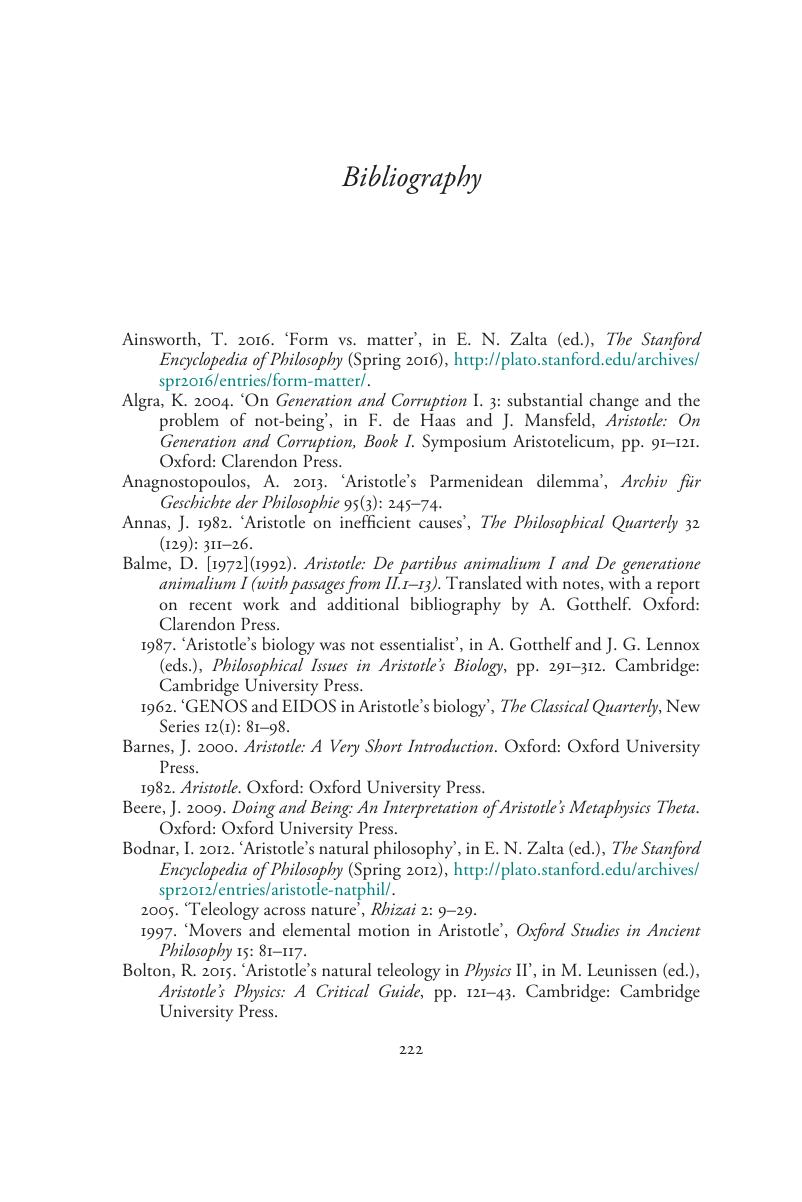Book contents
- Aristotle on Matter, Form, and Moving Causes
- Aristotle on Matter, Form, and Moving Causes
- Copyright page
- Dedication
- Contents
- Preface and Acknowledgements
- Abbreviations of Aristotle’s Works
- Introduction
- Chapter 1 Preliminary Puzzles
- Chapter 2 The Hylomorphic Model of Substantial Generation: Physics I
- Chapter 3 Substantial versus Non-Substantial Change: GC I 1–4
- Chapter 4 The Extended Hylomorphic Model: GC II 9
- Chapter 5 Biological Generation: Part One
- Chapter 6 Biological Generation: Part Two
- Chapter 7 The Efficient Cause of Animal Generation
- Chapter 8 The Architectonic Model
- Chapter 9 The Cosmological Significance of Substantial Generation
- Bibliography
- Index Locorum
- Subject Index
- References
Bibliography
Published online by Cambridge University Press: 14 November 2019
- Aristotle on Matter, Form, and Moving Causes
- Aristotle on Matter, Form, and Moving Causes
- Copyright page
- Dedication
- Contents
- Preface and Acknowledgements
- Abbreviations of Aristotle’s Works
- Introduction
- Chapter 1 Preliminary Puzzles
- Chapter 2 The Hylomorphic Model of Substantial Generation: Physics I
- Chapter 3 Substantial versus Non-Substantial Change: GC I 1–4
- Chapter 4 The Extended Hylomorphic Model: GC II 9
- Chapter 5 Biological Generation: Part One
- Chapter 6 Biological Generation: Part Two
- Chapter 7 The Efficient Cause of Animal Generation
- Chapter 8 The Architectonic Model
- Chapter 9 The Cosmological Significance of Substantial Generation
- Bibliography
- Index Locorum
- Subject Index
- References
Summary

- Type
- Chapter
- Information
- Aristotle on Matter, Form, and Moving CausesThe Hylomorphic Theory of Substantial Generation, pp. 222 - 231Publisher: Cambridge University PressPrint publication year: 2019

